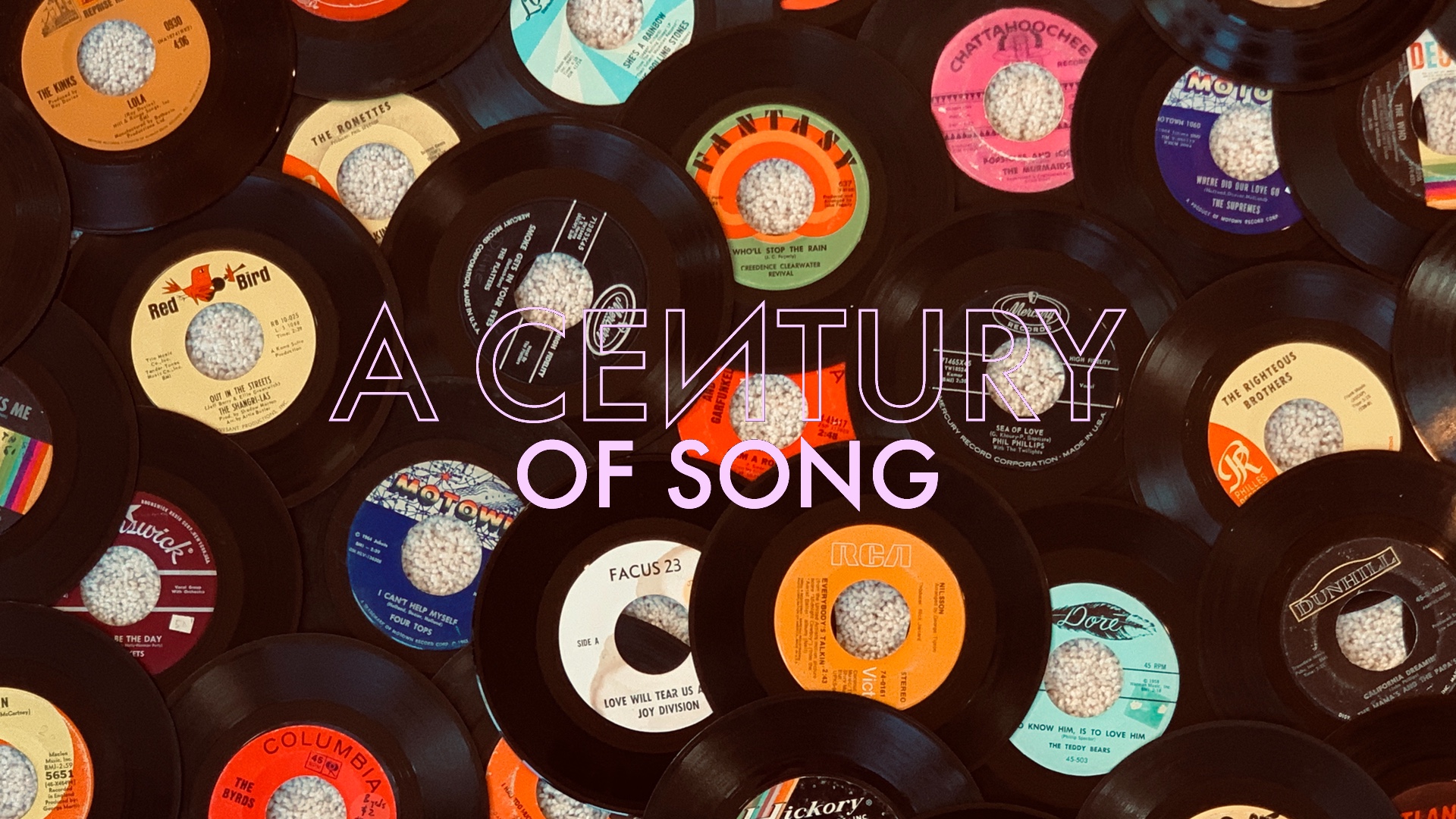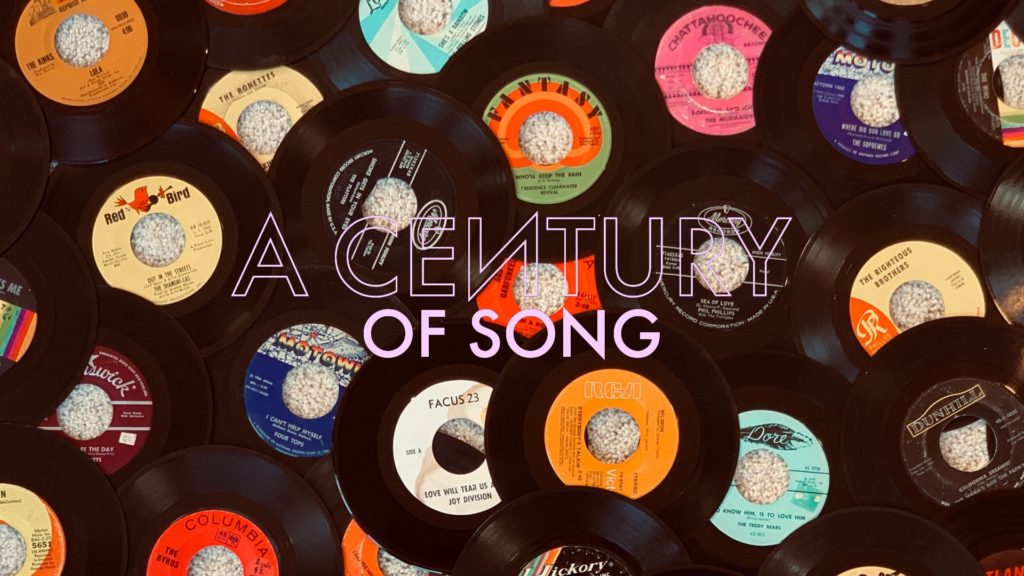
A Century of Song is an attempt to summarize 100 years of popular music through 1000 carefully chosen tracks. Included within this list are landmark singles, stellar album cuts, huge hits, hidden gems, and more than a few personal favorites. Read the introduction for the project here, and enjoy the embedded videos and Spotify playlist.
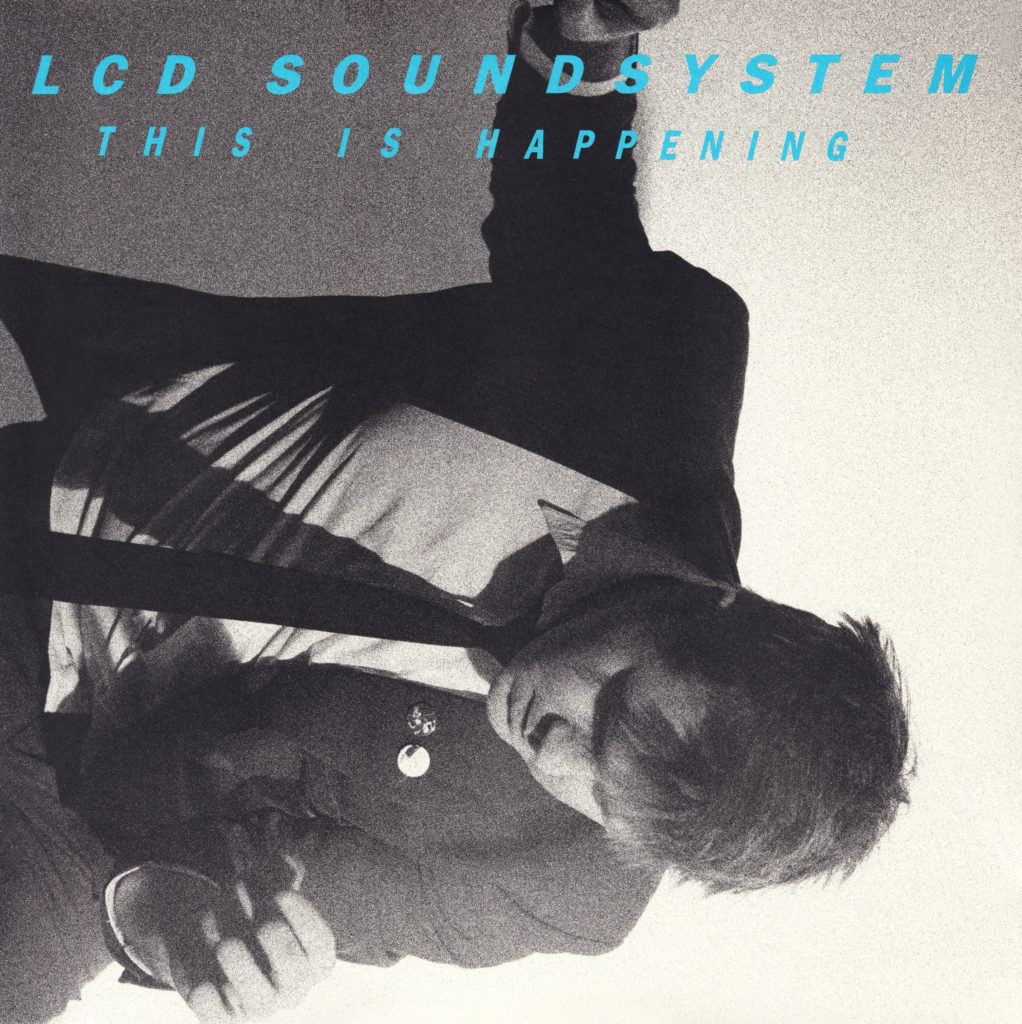
360
Shortly after its 2010 release, This Is Happening would be revealed to be LCD Soundsystem’s final record – at least until the reunion that produced 2017’s American Dream. Tinged with an air of finality, This Is Happening represented the culmination of a dizzyingly fruitful decade of work for the group’s central figure, James Murphy.
While Murphy’s songwriting had proven him to be a surprisingly sentimental artist (see #908, 726, and 430), This Is Happening‘s opener found LCD Soundsystem in peak form. “Dance Yrself Clean” perfects the dance-punk leanings of the project’s earlier work into a breezy, infectious nine-minute anthem.
“Dance Yrself Clean” merges the jaded nature of Murphy’s most affecting work, with the jagged beats of the material that first put LCD Soundsystem on the map. It’s a pulse-pounding track that stands as the pinnacle of a small, but substantive body of work.
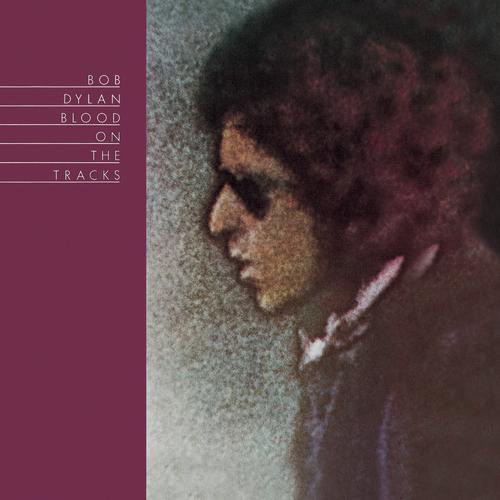
359
Coming on the heels of the travelogue/narrative that is “Tangled Up in Blue,” “Simple Twist of Fate” is the song that truly establishes the dour mood of Bob Dylan’s masterful Blood on the Tracks – the album that sealed his first major comeback.
Tormented by the impending dissolution of his marriage, “Simple Twist of Fate” is one of many Tracks that finds Dylan weaving himself in and out of a richly-detailed – but still somewhat fuzzy – narrative. There is a desperation to Dylan’s imagery that is particularly cutting, but it’s the pointed vocal expressions that truly drive the song home.
Blood on the Tracks was released toward the downslope of the confessional singer-songwriter trend that had marked the first half of the seventies. Dylan didn’t arrive at its heart-rending songs out of a desire to capitalize on an audience primed for such material, but “Simple Twist of Fate” managed to outclass virtually all the competition in the field.
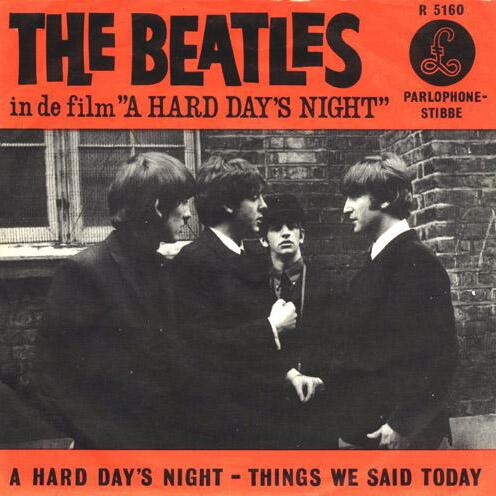
358
The “chord heard ’round the world” – and a source of continued debate amongst Beatle fanatics – opens up the soundtrack to the Fab Four’s first feature film. From there, “A Hard Day’s Night” romps through two-and-a-half of the most irresistible minutes in The Beatles’ catalog.
Written on the quick, while the film still needed a theme, “A Hard Day’s Night” was primarily a John Lennon track, but Paul McCartney assumes a co-lead vocal role on the song’s bridge. As such, while not exactly an example of one of the “eyeball to eyeball” Lennon/McCartney collaborations, the song is still evidence of the remarkable chemistry that the duo displayed from the outset.
While chemistry was an asset, it was charisma that remained the most important element to The Beatles’ magic. Though “A Hard Day’s Night” bursts from the speakers with life, it became even more indelible when paired with the images of a legitimately great film.
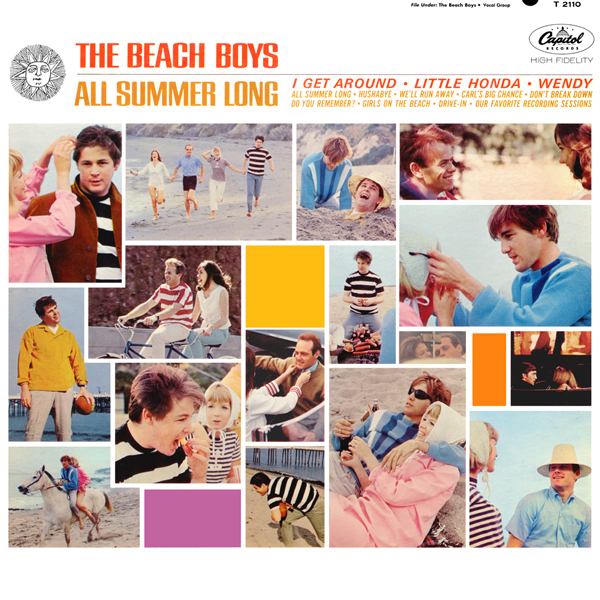
357
A Hard Day’s Night arrived on American shores just seven months after The Beatles played on The Ed Sullivan Show. However, in that brief time, the band had already had an incalculable impact on the American pop scene. One of the most impressive examples is this Beach Boys single, which Brian Wilson wrote and produced in the immediate aftermath of Beatlemania.
1964 found Wilson moving away from surf music, and while “I Get Around” would see The Beach Boys still focused on their other obsessions of girls and cars, the song displayed the group’s most superb production work to date. There is a clarity to the band’s unmistakeable vocal blend – and a driving quality to the instrumental track – that far surpasses anything that had come before.
The video below – from The Beach Boys’ appearance on the T.A.M.I. Show – displays more elements of The Beatles’ influence. Recorded two months after A Hard Day’s Night was released in the States, the clip features both a decidedly Ringo-esque performance from Dennis Wilson, and Carl Wilson playing the same Rickenbacker 360 model 12-string guitar as George Harrison. Mike Love’s dancing is predictably humiliating, but it ranks relatively-low on the list of his crimes against humanity.
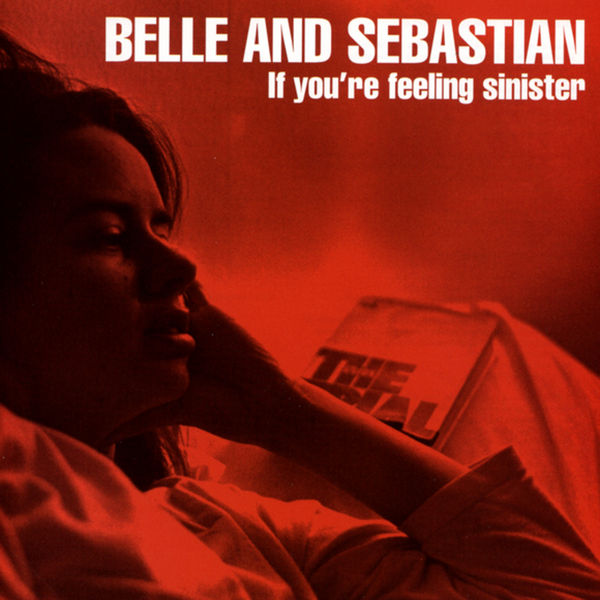
356
Belle and Sebastian became the UK’s most buzzed-about independent group on the strength of 1996’s Tigermilk, an album that was quickly followed up by the even better If You’re Feeling Sinister later that year. A masterpiece of sharp songwriting and charming baroque pop arrangements, Sinister remains the group’s high-water mark.
The pinnacle of the album – and of the band’s career – is its centerpiece, “Like Dylan in the Movies.” Centered around a sly reference to D.A. Pennebaker’s 1967 documentary of Bob Dylan’s legendary 1965 British tour, the song finds Stuart Murdoch weaving an ominous set of lyrics that seem to equate the paranoia of a dark walk home with the trappings of fame.
“Like Dylan in the Movies” features the richest musical arrangement on If You’re Feeling Sinister. Growing from a simple folk-rock track into a cinematic soundscape, the song perfectly balances the intimate charm of the group’s earliest work with the more sophisticated production of their later recordings.
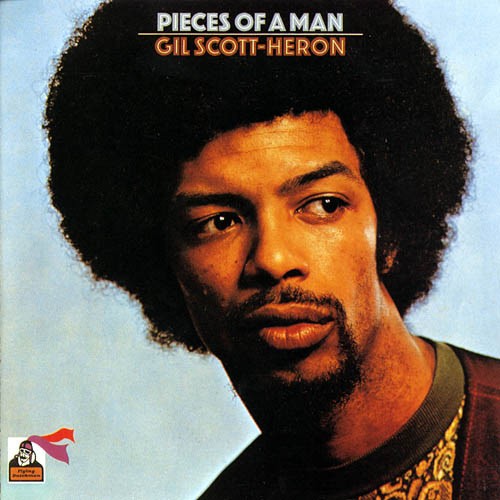
355
There was little precedent for Gil Scott-Heron’s signature track when it arrived in the fall of 1971, as the centerpiece to his debut LP, Pieces of a Man. While New York’s The Last Poets had tread somewhat similar ground on their self-titled 1970 debut – particularly on the track “When the Revolution Comes” – Scott-Heron brought a far more tuneful element to his biting social commentary.
Though his lyrics are rife with somewhat-dated cultural references, the scene that Gil Scott-Heron sets with “The Revolution Will Not Be Televised” remains all-too-relevant. His allusions to police brutality and political corruption – plus the combination of pop culture, sports, and consumerism as an opiate – bear a striking resemblance to our modern socio-political climate.
Musically, “The Revolution Will Not Be Televised” bridges the gap between contemporary sounds in funk and jazz. The rhythm work of Ron Carter (bass) and Bernard “Pretty” Purdie (drums) is particularly noteworthy, but the impressive flute performance by Hubert Laws gives the track an airy quality that provides a nice contrast to its streetwise realism.
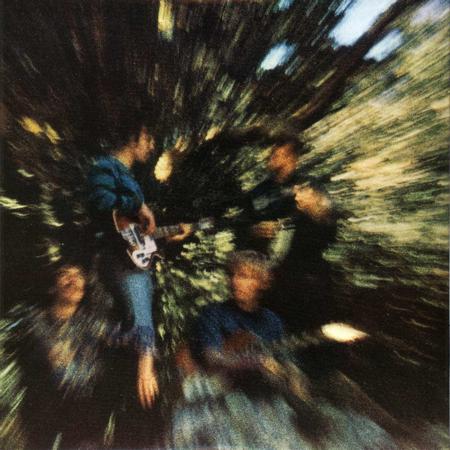
354
At his best, John Fogerty displayed a remarkable ability to craft songs that felt like they had existed forever. It was almost as if he had just plucked them from some kind of collective consciousness, and just had the good fortune of attaching his name to them first. “Proud Mary” is one of the finest such examples.
A song of escape that alludes to a bevy of quintessentially American motifs – riverboats, work songs, Black spirituals, Mark Twain – “Proud Mary” was a timeless track that contrasted with the tumult of the late-sixties. Of course, Fogerty was not averse to social commentary – as the upper reaches of this list will prove – but “Proud Mary” found him adding an instant standard to the American folk music songbook.
That “standard” nature would be confirmed by the song’s impact, both immediate and lasting. Within two years of Creedence’s original version, both Solomon Burke and Ike & Tina Turner would score hits of their own with “Proud Mary.” It remains one of the most covered – and instantly recognizable – songs in the American canon.
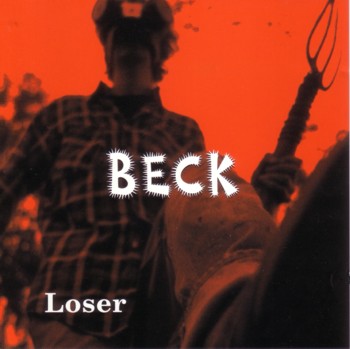
353
Assembling this group of 1000 songs was far from an exact science, but looking at the final list of tracks, I was surprised that Beck was only represented by three entries: “Jackass” (#735), “Lost Cause” (#436), and “Loser.” From his 1993 arrival in the public eye through 2002’s Sea Change, the Los Angeles singer-songwriter crafted a catalog as rich as it was eclectic. His underrepresentation on this list notwithstanding, Beck was one of the finest songwriters of his generation.
“Loser” seems like the obvious choice for Beck’s definitive track. Arguably the song that best displays his array of influences – most prominently folk and hip-hop – “Loser” was also the single that introduced him to a wide audience. It perfectly synthesized the contradiction between his slacker exterior, and the wide-ranging ambition that produced a decade of spellbinding work.
It’s easy to be fatigued by a song that was, at least for a while, inescapable – especially when it only touches upon a few of the many things that make its creator a fascinating artist. However, “Loser” was undoubtedly one of those songs that made an immediate and lasting impression when it crossed my ears for the first time in the spring of 1994. I know I wasn’t alone in that. We had heard elements of it before, but never anything else quite like it.
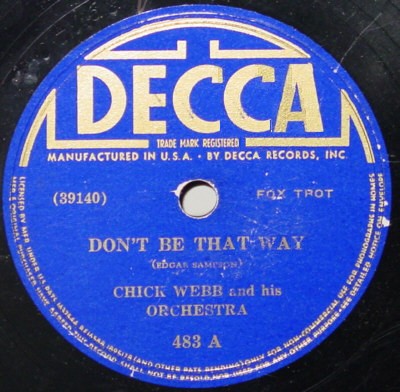
352
Despite the tuberculosis of the spine that a left him with a small stature, Chick Webb was a giant of 1930s jazz. Leading one of the finest orchestras of the time, Webb was a fixture at Harlem’s Savoy Ballroom, and one of the greatest drummers of the swing era.
Written by alto saxophonist Edgar Sampson, “Don’t Be That Way” was the Chick Webb Orchestra’s definitive recording – at least aside from the more pop-oriented tracks that featured a young Ella Fitzgerald on vocals. The ensemble play is sharp, and the song includes several brief-but-impressive solo features from the group’s horn section. Webb’s punctuations toward the end of the track only give a small glimpse of his prowess on the drums – check out “Harlem Congo” for more convincing evidence of that – but the song displays his command over a talented cast of players.
“Don’t Be That Way” would also famously be recorded by Benny Goodman’s orchestra in 1938. While their version is similarly stellar, Webb’s surpasses it slightly, in terms of energy and musicianship. It wasn’t the first time that Webb had beaten Goodman. A year before – and two years before he would succumb to his lifelong illnesses – Webb’s group bested Goodman’s in the Savoy’s most legendary battle of the bands.

351
“Bang a Gong (Get It On)” (#839) may be T. Rex’s most famous song, but there is no doubt that “Metal Guru” was the Marc Bolan-led band’s finest moment. Glam’s greatest non-Bowie single, “Metal Guru” was the irresistible opener to 1972’s classic album, The Slider.
“Metal Guru” packs an embarrassment of riches into its two-and-a-half-minute run-time. Bolan’s opening wail alone is priceless, but so too are the lilting strings, glittering backing vocals, and charmingly absurdist lyrics – I’ve always been particularly fond of the “silver-studded sabre-tooth dream” line. While glam was often accused of placing artifice over art, “Metal Guru” is pop music of the highest caliber.
The Top of the Pops performance in the video below gives ample evidence of Bolan’s appeal. Coming at the height of T. Rex’s success – The Slider followed 1971’s remarkable Electric Warrior – the band could only go downhill. The next few years would see the departure of the group’s entire lineup, while Bolan’s life spiraled into marital, health, and artistic disarray. While seemingly on the rebound, Bolan was killed in a car accident in September 1977, at the age of twenty-nine.
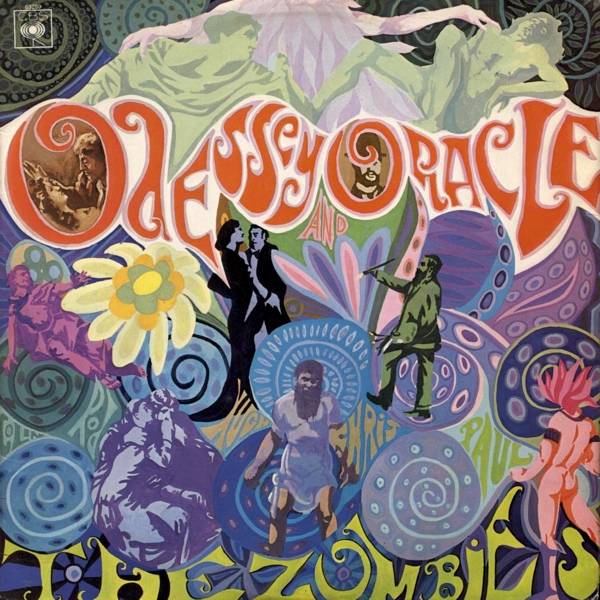
350
A wonderfully warm introduction to one of the greatest albums of all-time, “Care of Cell 44” is a quixotic take on the resumption of a relationship. Brimming with optimism, the song belies the troubled circumstances that drove its couple apart, but the lush baroque arrangement and rich harmonies suggest nothing but smooth sailing ahead.
That arrangement is embellished by Abbey Road Studios’ Mellotron – the instrument that helped give The Zombies’ swan song, Odessey and Oracle, the stately grandeur that has made it a psych-pop touchstone. Colin Blunstone’s vocals – and the harmonies of his bandmates – stand in contrast to the inner-group struggles that would drive The Zombies to break up shortly after the album’s completion.
While the other bookend track of Odessey and Oracle may be the album’s most iconic song, “Care of Cell 44” is far more indicative of the treasures contained within a record that, for too long, was regarded as something of a lost classic. Odessey is rightfully hailed as a masterpiece today, and “Care of Cell 44” serves as its most-welcoming preface.
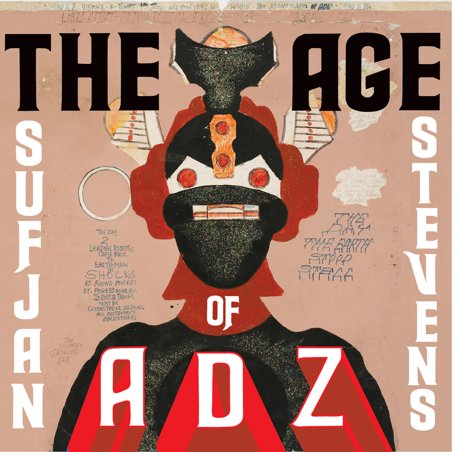
349
The initial reaction to Sufjan Stevens’ 2010 record, The Age of Adz, was one of relatively muted enthusiasm. A hard left turn from Stevens’ last “proper” album, Adz was a thorny, complex, and bold work that had more in common with his pre-fame electronic experiments than the earnest folk that had made him an indie star.
Despite its imposing and cold exterior, Adz was arguably the most human record that Sufjan Stevens had made to date. Examining the twin tortures of depression and anxiety, the record provided the clearest view into Stevens’ psyche yet. Following an often-intense fifty minutes of music, the epic closing track, “Impossible Soul,” stands as the album’s most engrossing piece.
A twenty-five-minute denouement divided into several uniquely divergent sections, “Impossible Soul” synthesizes the emotion and excess of Adz into a single extended track. Ranging from sparse, Auto-Tuned folk to celebratory electro pop, the EP-length song stands among the most impressive and affecting moments in Stevens’ catalog. Like many great album closers, it functions best when taken in the context of everything that preceded it, but it’s still a stunning track on its own.
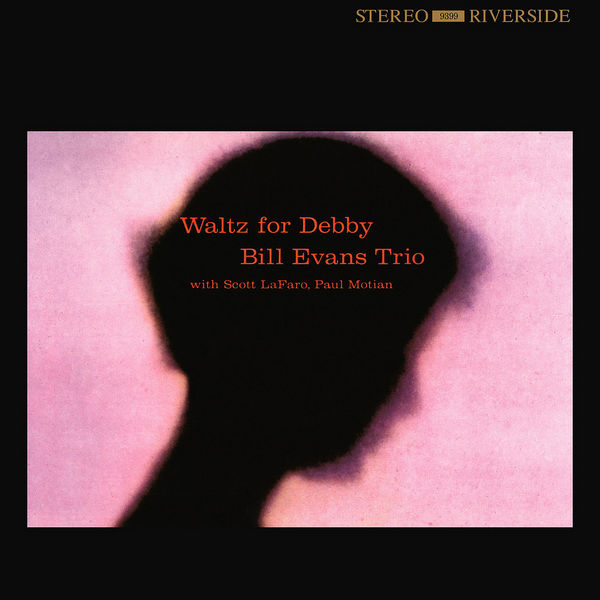
348
Bill Evans first recorded his signature track, “Waltz for Debby,” for his 1957 debut, New Jazz Conceptions. Initially realized as a brief, solo piano piece, the song has an elegant beauty that – even in its simplest state – makes it one of the most gorgeous compositions in the history of American jazz music.
Revisited as the title-track to Evans’ 1962 live record, “Waltz for Debby” is nothing short of devastating. By this point, the song had gestated into something truly transcendent, brought to its ideal state through the remarkable cohesion between Evans, Paul Motian (drums), and Scott LaFaro (bass).
As the centerpiece to Bill Evans’ trio’s finest hour, “Waltz for Debby” was hardly a waltz at all. LaFaro and Motian lent the song a swinging quality that placed it somewhere between a ballad and bop. Evans’ melody is as lovely as ever, but the star on this night was LaFaro. His acrobatic bass playing gave the song more expressive depth than it ever had before. Tragically, LaFaro was killed in an automobile accident just two weeks after this recording was made. Evans released it the following year as a tribute to his fallen friend.
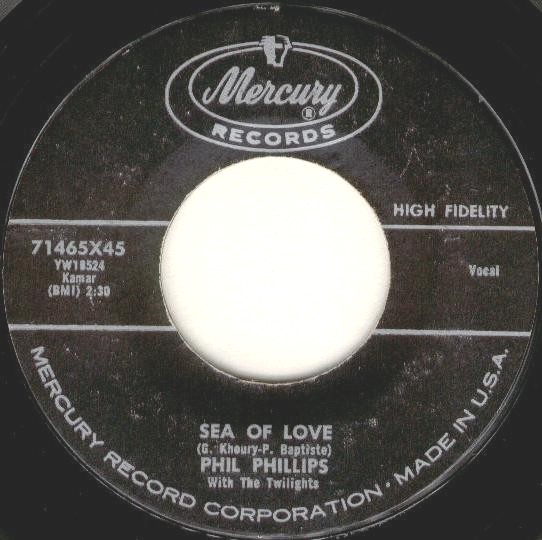
347
Modest Mouse, and their remarkable 1997 album The Lonesome Crowded West (#670, 613, and 569), have made quite an impact on this list, but this is where their ride stops. The opening track to that record, “Teeth Like God’s Shoeshine” is the most exhilarating moment in the group’s catalog – a fierce blast of angst, tempered with a surprising level of observance for such a young band.
Few records better balance that sense of anger and maturity than The Lonesome Crowded West, and never more effectively than on “Teeth Like God’s Shoeshine.” A critique of consumerism, urban sprawl, and whatever else crossed Isaac Brock’s mind, the song is equally pummeling in its sharp lyrics and forceful musical assault.
In time, Modest Mouse would break through to widespread commercial success (#381). Their albums – and artistic success-rate – have grown more infrequent over time, but “Teeth Like God’s Shoeshine” stands as a stirring reminder of what made them such a vital group at the turn of the century.
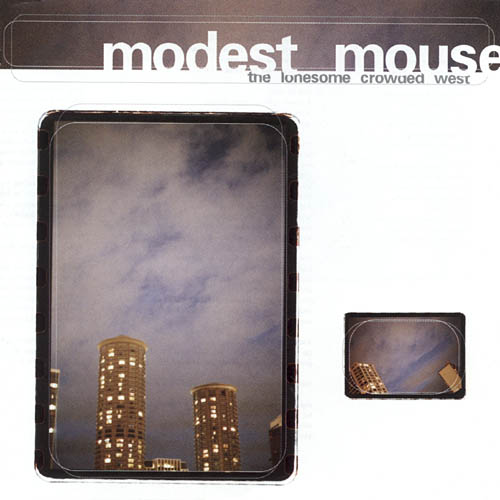
346
Modest Mouse, and their remarkable 1997 album The Lonesome Crowded West (#670, 613, and 569), have made quite an impact on this list, but this is where their ride stops. The opening track to that record, “Teeth Like God’s Shoeshine” is the most exhilarating moment in the group’s catalog – a fierce blast of angst, tempered with a surprising level of observance for such a young band.
Few records better balance that sense of anger and maturity than The Lonesome Crowded West, and never more effectively than on “Teeth Like God’s Shoeshine.” A critique of consumerism, urban sprawl, and whatever else crossed Isaac Brock’s mind, the song is equally pummeling in its sharp lyrics and forceful musical assault.
In time, Modest Mouse would break through to widespread commercial success (#381). Their albums – and artistic success-rate – have grown more infrequent over time, but “Teeth Like God’s Shoeshine” stands as a stirring reminder of what made them such a vital group at the turn of the century.
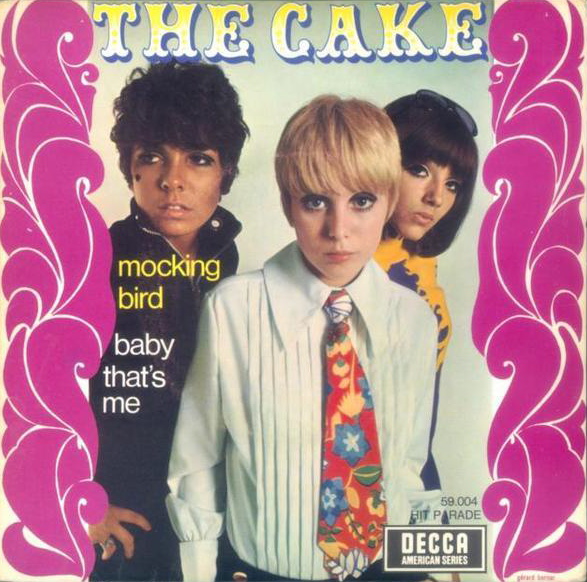
345
The Cake recorded two albums for Decca Records, had connections among some of the biggest rock bands of their time, frequently wrote their own material, and recorded in the best studios available, but the group never surpassed the ethereal beauty of their debut single. Written by Jackie De Shannon and Jack Nitzsche, “Baby That’s Me” is one of the finest girl group singles of all-time.
Arriving at the peak of the baroque/psychedelic era, “Baby That’s Me” has an atmospheric quality that merged the early-sixties Wall of Sound productions of Phil Spector with the dreamier qualities of contemporary rock music. The results are stunning, even if they didn’t score the trio a major hit in the process.
There is little from before – or since – that sounds all that close to “Baby That’s Me.” While The Cake’s influences are identifiable, they coalesce into something almost entirely original on this beguiling track. It remains a bit of an obscurity, but “Baby That’s Me” is a simply stunning single.
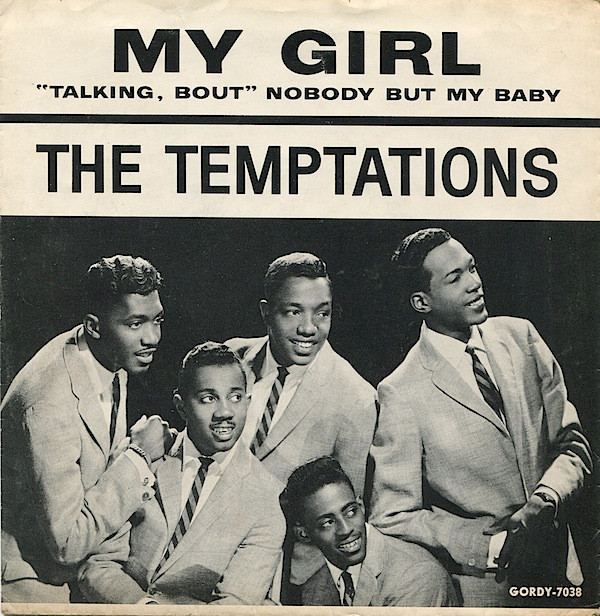
344
Taking his first turn at lead vocals, David Ruffin gave a powerful performance, and in turn, gave The Temptations their first truly spectacular single. One of the most perfect songs to emerge from Motown’s Hitsville U.S.A. studio, 1964’s “My Girl” stands among the label’s quintessential hits.
By 1964, Motown had already broken through to the pop market with hits by the likes of Mary Wells, The Marvelettes, and The Miracles. However, the label would soon reach another level entirely with the success of The Supremes, Four Tops, and The Temptations. “My Girl” was a harbinger of things to come for the venerable Detroit label: sleek, sophisticated, and catchy beyond belief.
The vocals of Ruffin and his bandmates only tell part of the story of “My Girl.” The song’s musical backing – led by James Jamerson’s bass and Robert White’s iconic guitar riff – was augmented by a lush string arrangement that took the already-celebratory nature of the song to something approaching pure jubilation.
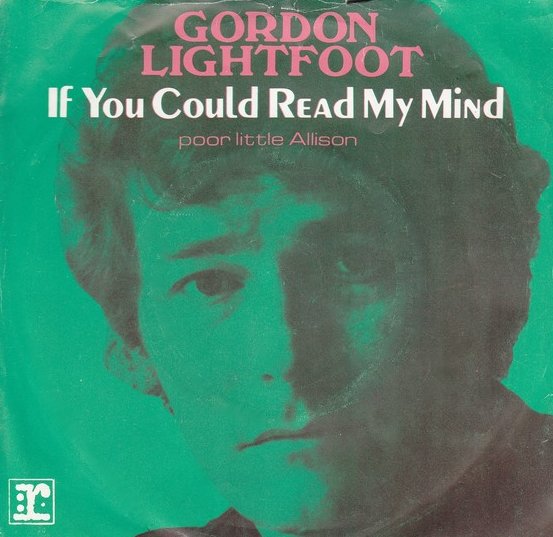
343
We all have those songs that trigger a strong sense of nostalgia, and I’m fortunate that one of them has remained a favorite for as long as I can remember. Despite pushing into soft rock territory at several junctures of his lengthy career, Gordon Lightfoot was a strong – and often outstanding – songwriter. Never was he better than on his signature track, “If You Could Read My Mind.”
Lightfoot’s 1975 compilation, Gord’s Gold, was a staple of my dad’s record collection. I still harbor a strong fondness for “Carefree Highway,” “Song for a Winter’s Night,” and “Beautiful” – partially out of sentimentality, and partially because they are simply good songs. “If You Could Read My Mind” is even better – a plaintive track that wraps its mournful lyrics inside of a glorious melody.
Originally recorded for 1970’s Sit Down Young Stranger – an album later renamed for its biggest hit – the song features a tastefully unobtrusive string arrangement. The Gord’s Gold version that I heard over and over again as a kid adds backing harmonies that wrest even more emotion from an already affecting track. It’s entirely possible that this is the song on this list of 1000 that I have loved the longest.
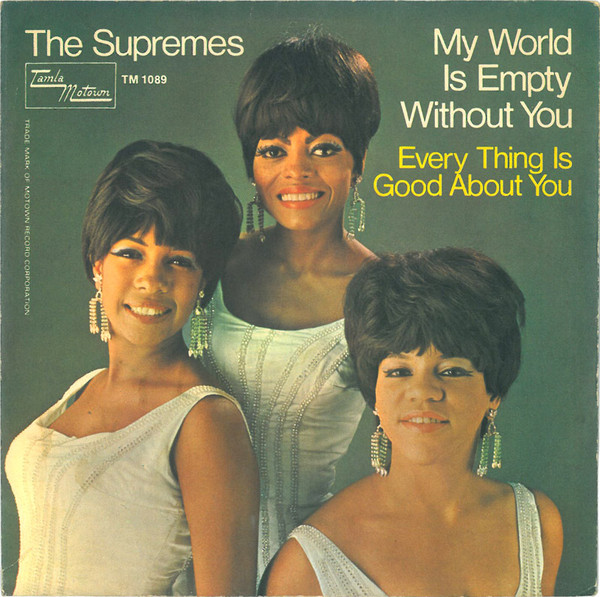
342
One of the most evocative tracks in The Supremes’ oeuvre, “My World Is Empty Without You” seethes with a tension that was often missing in the group’s immaculately produced singles. Set to a pulsing beat and minor key melody, it’s a stirring moment from one of the sixties’ finest pop acts.
Written by Motown’s ace Holland-Dozier-Holland team, “My World Is Empty Without You” has a complexity that was rare in popular music – even for a label with such a keen attention to detail. The surging rhythm of the track stands as one of the finest examples of the dexterity and versatility of Motown’s house band, The Funk Brothers. The lush orchestration helps in bringing out the mournful qualities of Diana Ross’ commanding vocal performance.
While “My World Is Empty Without You” would be considered a hit by the standards of any group, its commercial performance paled in comparison to The Supremes’ previous chart toppers. Time has been kind to the song, as it now stands among the most celebrated tracks in the group’s catalog.
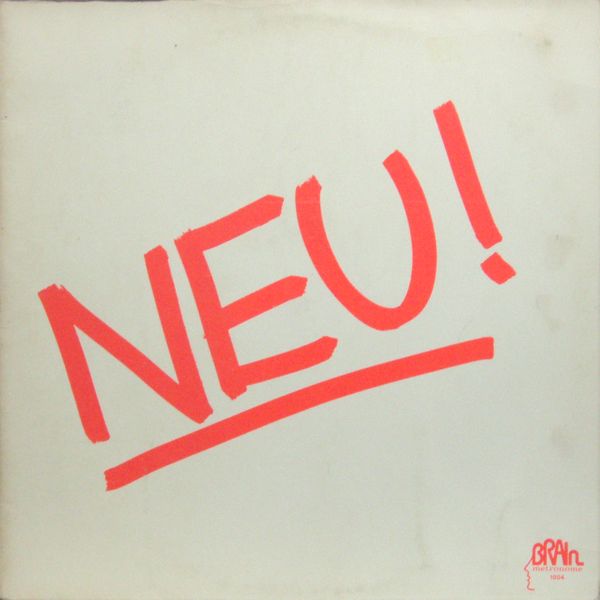
341
The song that effectively invented the genre known as “krautrock,” “Hallogallo” was the opening track to NEU!’s 1972 self-titled debut album. While the album was far from a commercial smash, in time it would become one of the most influential rock records of the early-seventies.
NEU! was formed by former Kraftwerk members, Klaus Dinger and Michael Rother. While their ex-bandmates would turn toward a heavily electronic – and even more influential – sound with their subsequent work, NEU! remained committed to preserving the basic elements of rock, while creating music with little precedent.
Dinger’s steady drum work would establish the template for krautrock. “Hallogallo” was his first employment of the “motorik” beat that would come to define the genre – inspiring plenty of his contemporaries, and later work from the likes of Stereolab and Wilco. Rother provided the atmosphere to “Hallogallo” with his layers of heavily treated guitars. It’s a rare, extended instrumental track that manages to breeze by in what seems like half of its run-time.

